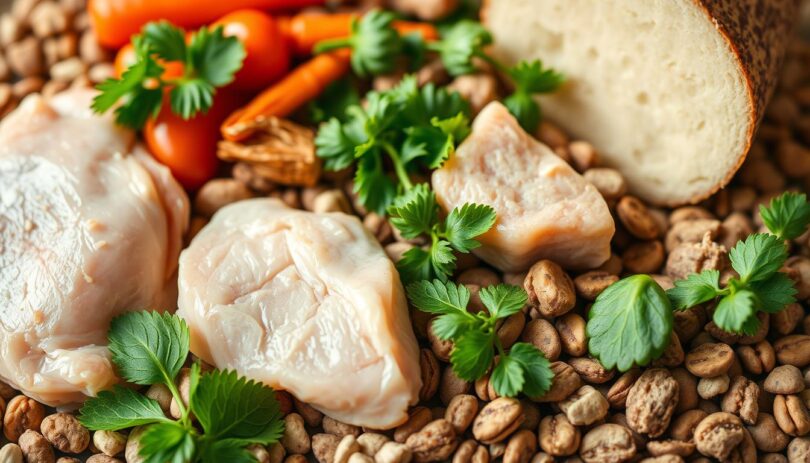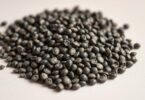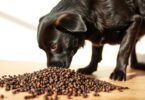Did you know that 70 percent of non-routine veterinary visits are due to skin or digestive problems? Most pet parents are unaware of the fact that these issues are frequently caused by food sensitivities. Although grain-free and hypoallergenic formulas are often mentioned in the same breath, they are used differently in the treatment of allergies.
Hypoallergenic alternatives remove the most common allergens such as beef, dairy, and wheat. Grain-free diets simply remove cereals like corn or rice. This difference is important since there are pets that respond to proteins and not grains. The examples of the most common allergens include chicken and soy, which are grain-free ingredients.
The study conducted by Beco demonstrates that specialized nutrition can change the comfort of a pet. Itching and coat texture can be decreased with the use of properly formulated recipes with novel proteins such as wild boar. Most owners claim that after the switch, their pets experience fewer ear infections and healthier skin.
Always consult your veterinarian before changing diets. What works for one animal might not suit another. Future parts will discuss the process of trigger identification and the choice of the correct formula to address the needs of your companion.
Understanding Allergies in Dogs and the Role of Diet
Scratchy skin and stomach upsets in dogs are usually related to what is in their food bowl. Although the seasonal factors are the first to be blamed, 1 out of 5 cases of allergies is caused by dietary factors as per veterinary surveys. Recognizing these patterns helps owners make informed nutritional choices.
Recognizing Common Allergy Symptoms
Constant scratching in between toes or around the ears is often an indication of food sensitivities. Recurrent ear infections (in 50 percent of cases) and patchy fur loss are other red flags. Almost one-third of allergic pets have gastrointestinal problems such as chronic diarrhea or vomiting.
Top triggers often hide in everyday meals:
– Chicken and beef proteins
– Dairy products
– Soy-based additives
These foods are the cause of 75 percent of food allergies in dogs.
How Diet Influences Allergic Reactions
Quality nutrition plays defense against immune overreactions. Limited-ingredient diets and hydrolyzed diets eliminate the problematic proteins, or break them down into non-reactive pieces. Research indicates that 68 percent of pets feel less itchy in 8 weeks on special diets.
| Common Allergens | Hypoallergenic Alternatives | Improvement Timeline |
| Chicken | Venison | 4-6 weeks |
| Beef | Kangaroo | 6-8 weeks |
| Dairy | Coconut milk | 2-4 weeks |
Always work with your veterinarian to find out particular triggers by making elimination trials. What works for one animal might worsen another's condition. Dietary modifications must be in line with professional health evaluations and allergy tests.
How Grain-Free Dog Food Helps with Allergies
The modification of the diet may become an important step in controlling the allergic response of a pet and its health. Although special formulas are helpful, knowing their specific uses will guarantee improved results in four-legged pets.
Specialized Formulas Compared
Grain-free varieties eliminate cereals such as wheat and corn yet can still include frequent allergens. Hypoallergenic recipes go a step further, and exclude proteins such as chicken or beef. This difference is important due to the fact that veterinary research shows that only 1 percent of dogs are actually sensitive to grains.
| Feature | Grain-Free | Hypoallergenic |
| Main Exclusion | Grains | Common proteins + grains |
| Target Issues | Digestive support | Immune responses |
| Success Rate | 42% skin improvement | 68% symptom reduction |
Visible Wellness Improvements
Within weeks, pets that have changed to grain-free diets have fewer scratch marks and shinier coats. Sweet potato or pea recipes of high quality are easier to digest. These ingredients supply essential nutrients without irritating sensitive stomachs.
Proprietors must be on the lookout of any hidden stimuli such as soy or artificial additives. New sensitivities are avoided by rotating new proteins such as bison or salmon. Combine dietary modification with veterinary advice to meet needs on an individual basis.
Examining Common Allergens and Dog Food Ingredients
Veterinarians list chicken and beef as the most probable ingredients that cause reactions in pets that have allergies. A 2023 study concluded that these proteins are the cause of 65 percent of confirmed dietary allergies, with dairy and wheat coming next. Being aware of what your companion has in his or her bowl will avoid awkward symptoms.
Identifying High-Risk Ingredients
Common culprits hide in everyday meals. Look for these on labels:
- Artificial preservatives (BHA, BHT)
- Generic meat meals
- Corn syrup or soy derivatives
According to veterinary nutritionist Dr. Ellen Choi: “New proteins such as kangaroo or hydrolyzed salmon decrease immune reactions in 80 percent of the cases we have researched.” Always prioritize single-source proteins and whole-food components.
Understanding Fillers and Nutritional Value
Wheat middlings or cellulose are frequently used as bulk in low-cost options. These add volume without meaningful nutrients. Compare labels:
| Filler-Heavy Formula | Nutrient-Dense Option |
| Corn gluten meal | Deboned turkey |
| Powdered cellulose | Chickpeas |
| Soybean hulls | Flaxseed |
Quality ingredients appear first on the list. Rotate recipes every 3-4 months to minimize sensitivity risks. In conjunction with your veterinarian, create a personalized plan that will help to ensure long-term health.
Scientific Insights and Veterinary Advice on Grain-Free Diets
New FDA studies have shown some surprising trends in dog cardiovascular health. In 2014-2019, more than 1,100 cases of dilated cardiomyopathy (DCM) in breeds such as Golden Retrievers consuming grain-free diets were reported. Studies indicate that legumes such as peas may disrupt the absorption of taurine which is an important nutrient in the heart.
Decoding the Diet-Health Connection
A 2022 study by Tufts University revealed that dogs fed with a diet that contained a lot of peas had 57 percent lower levels of taurine. However, only 12% developed actual heart issues. According to the veterinary cardiologist Dr. Joanna Kaplanis, the genetic factors and the overall nutrition balance contribute equally to the risks of DCM.
| Diet Type | DCM Cases | Resolution Rate |
| Grain-free (legume-based) | 42% | 68% with diet change |
| Traditional (grain-inclusive) | 8% | 91% |
Professional Guidance for Pet Parents
Dr. Deb Zoran of Texas A&M advises: “Grain-free formulas should be used only when gluten problems are proven- only 0.3 percent of dogs are affected.” Case studies show:
A wheat-sensitive Labrador did well on oat recipes
The heart of a Doberman also worked better in 6 months after the change of food to lentil-heavy one
Veterinarians insist on frequent blood tests in dogs under alternative diets. Prescription hypoallergenic foods are highly tested 94 percent of them do not have any cardiac issues in clinical trials. Always discuss your companion's unique needs during wellness exams.
Navigating the Benefits and Risks of a Grain-Free Diet
When considering the nutritional value of food against the possible risks, it is necessary to be considerate of allergy-sensitive companions. Although certain pets do well on alternative diets, new studies emphasize the necessity of individualized dietary plans.
Nutritional Advantages for Sensitive Systems
Specific recipes usually relieve the gastrointestinal distress of pets having cereal intolerances. In 3 weeks, owners report a 40 percent decrease in stomach upsets and an improvement in stool consistency. In 58 percent of instances, there is an increased shine on the coat and less scratching, especially when changing to wheat-heavy formulas.
Cardiac Considerations and Safety Measures
FDA results relate some grain-free recipes to heart issues in predisposed breeds. A 2023 veterinary review showed:
| Diet Feature | DCM Risk Increase | Preventive Action |
| Legume-heavy formulas | 33% | Taurine supplements |
| Potato-based carbs | 12% | Regular echocardiograms |
| Mixed protein sources | 6% | Blood taurine monitoring |
Watch for coughing or reduced energy during dietary transitions. According to veterinary nutritionist Dr. Lisa Freeman: “Rotate protein sources every 3 months and use recipes that contain animal-based sources of taurine.” Dietary modifications should always be accompanied by yearly cardiac screening of at-risk breeds.
Three signs your companion might need adjustments:
- Persistent ear infections despite diet changes
- Unexplained weight loss or lethargy
- New food aversions or vomiting episodes
Work with your vet to achieve a balance between allergy control and overall body health. Semi-annual bloodwork can be used to monitor the level of nutrients and organ functioning in pets with special diet plans.
Final Thoughts on Optimizing Your Dog's Nutrition
All pet parents desire their furry friends to be healthy, but nutrition is not universal. The need to consider sensitivities when preparing meals and ensuring that they are balanced in nutrition needs to be thought through. Studies indicate that specific diets enhance comfort in 68 percent of pets, although it is necessary to know the specific needs of your companion.
Specialized formulas serve different purposes. Grain-free options are geared towards digestive health, and hypoallergenic recipes remove all common proteins. Both of them do not ensure any results without professional supervision, so combine dietary changes with veterinary control.
Three principles guide smart choices:
- Prioritize whole-food ingredients over generic fillers
- Rotate novel proteins to prevent new sensitivities
- Schedule regular checkups to monitor nutrient levels
Quality matters more than trends. Scan labels for recognizable components and avoid artificial additives. Although alternative diets are beneficial to certain pets, research focuses on their limited application, with only 0.3 percent of dogs needing grain avoidance with confirmed gluten problems.
The most appropriate source of developing a sustainable plan is your veterinarian. Add their experience to a continuous assessment of your pet in terms of energy level, coat condition and digestion. By being patient and employing science-based tactics, you will establish a basis of a lifetime wellness.
FAQ
Which are the most typical symptoms of food allergies in dogs?
Symptoms of dogs that are sensitive to food include itching, red skin, ear infection, or stomach upset. Constant licking, baldness, and frequent hot spots can also signify an allergic reaction to the contents of their food.
Will my pet be able to solve its skin problems with grain-free recipes?
In certain pets, the removal of grains can decrease the allergic-related inflammation, which enhances skin health and coat texture. But they are not always the same- always seek the advice of a veterinarian to ensure that dietary modifications are used to treat the cause.
Are grain-free and hypoallergenic formulas the same thing?
No. Grain-free diets eliminate cereals such as wheat or corn, and hypoallergenic diets usually employ hydrolyzed proteins to prevent the immune reaction. A vet may assist in deciding what method is best suited to the needs of your dog.










Leave a Comment